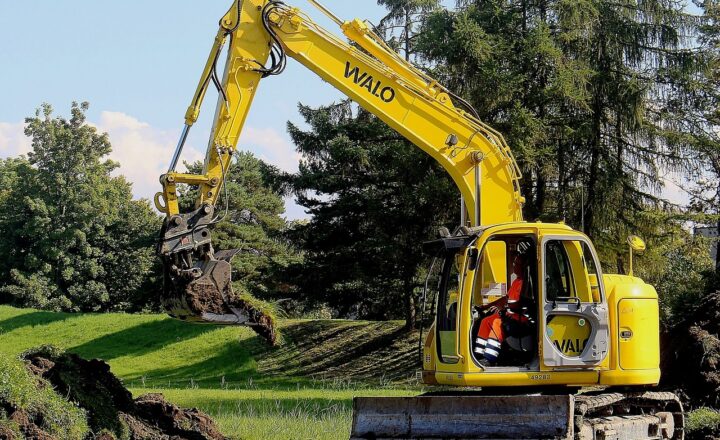
Great Zimbabwe, a monumental site located in present-day Zimbabwe, has long captured the imagination of historians, archaeologists, and tourists alike. Once the capital of a thriving civilization between the 11th and 15th centuries, Great Zimbabwe stands as a testament to the ingenuity, organization, and cultural richness of its people. This article delves into the profound significance of Great Zimbabwe, its monumental ruins, and the vibrant culture of the civilization that created it.
1. A Brief Overview of Great Zimbabwe
Great Zimbabwe emerged as a powerful kingdom during the late Iron Age, with its peak occurring between the 13th and 15th centuries. It served as a political, economic, and religious center for the people of the region. Spanning over 1,800 hectares, the site includes impressive stone structures, known for their intricate dry-stone walling techniques, which have lasted for centuries.
With its impressive buildings, varied artifacts, and rich historical legacy, Great Zimbabwe has been designated a UNESCO World Heritage site, ensuring its preservation for future generations. But what exactly made this civilization so remarkable?
2. The Architecture of Great Zimbabwe
One cannot discuss Great Zimbabwe without mentioning its remarkable architecture. The most prominent structures within the site include the Great Enclosure, the Hill Complex, and the Valley Ruins.
The Great Enclosure
The Great Enclosure is the largest ancient structure in sub-Saharan Africa. It features a circular stone wall that encloses an area that was believed to be a royal residence or a place for ritualistic ceremonies. The massive walls, built without mortar, display the exceptional skills of the ancient builders. The height of the walls and their impressive stonework make the Great Enclosure a fascinating study of architectural prowess.
The Hill Complex
The Hill Complex was likely the site of powerful leadership, set atop a small hill to provide both a commanding view and security. The numerous walls and terraces within this area suggest it served a significant political and ceremonial purpose. Evidence of ritual practices, including items like pottery fragments and tools, draws researchers to analyze the cultural aspects of life in Great Zimbabwe.
Valley Ruins
In contrast to the imposing nature of the Great Enclosure and the Hill Complex, the Valley Ruins consist of smaller structures, believed to be housing and trade centers. The presence of gold artifacts suggests that Great Zimbabwe had a thriving trade network, facilitating the exchange of goods such as gold, ivory, and textiles.
3. The Economy and Trade of Great Zimbabwe
Great Zimbabwe was strategically located near trade routes that connected its inhabitants to the coastal city-states of East Africa. The economy of Great Zimbabwe relied significantly on trade, with gold being one of the most prized commodities. Evidence suggests that the kingdom had intricate trade networks that stretched as far as Persia, China, and India.
Gold Trade
Gold was crucial to the prosperity of Great Zimbabwe. Gold artifacts, often discovered at the site, reveal much about the wealth of this civilization. The kingdom also benefited from trading ivory, which was highly sought after in international markets. Taxation on goods transported through the region further augmented the kingdom’s wealth and power.
Interaction with Foreign Cultures
The influence of foreign cultures can be observed through archaeological artifacts discovered at Great Zimbabwe. Items from far-away lands tell the story of the civilization’s extensive trade connections. From pottery to beads, these artifacts reveal interactions with Persian, Indian, and Chinese merchants, indicating that Great Zimbabwe was an influential trader on the global stage.
4. The Culture and Society of Great Zimbabwe
Great Zimbabwe was not only a center of trade and politics but also a vibrant cultural hub. The people who inhabited this remarkable site shared a rich cultural identity defined by traditions, belief systems, and artistic expressions.
Religious Practices
The spiritual beliefs of the Zimbabwean people played a significant role in their society. Worship of ancestral spirits and the connection to the natural world were integral to their religious practices. Ceremonial objects and sites, such as shrines, were key to their rituals, reflecting the community’s strong spiritual life.
Art and Craftsmanship
Great Zimbabwe is renowned for its artistic achievements, particularly in crafting pottery, beadwork, and sculptures. The intricate designs found on pottery and the stunning beadwork reflect the sophisticated skills of its artisans. Art served as both a medium of expression and a source of identity for the people.
5. Decline and Legacy of Great Zimbabwe
Despite its impressive achievements, Great Zimbabwe eventually faced challenges leading to its decline. Factors such as soil depletion, climate change, and shifting trade routes contributed to its downfall in the 15th century. The once-thriving city became abandoned, leaving behind enigmatic ruins.
The legacy of Great Zimbabwe, however, endures. It remains a symbol of African ingenuity and resilience, serving as a powerful reminder of the continent’s rich history. Today, it attracts thousands of visitors each year, bearing witness to the strength of a civilization that thrived long before colonialism.
Conclusion
The Forgotten Civilization of Great Zimbabwe and its monumental ruins reveal the profound achievements of its people, echoing lessons of power, trade, artistry, and spirituality. Great Zimbabwe stands not merely as a set of ancient stones but as vibrant remnants of a society rich in culture and identity. Its preservation and acknowledgment are essential in reclaiming historical narratives often overshadowed by colonial accounts. As we explore and learn from Great Zimbabwe, we celebrate the complex tapestry of humanity woven through our shared history.







